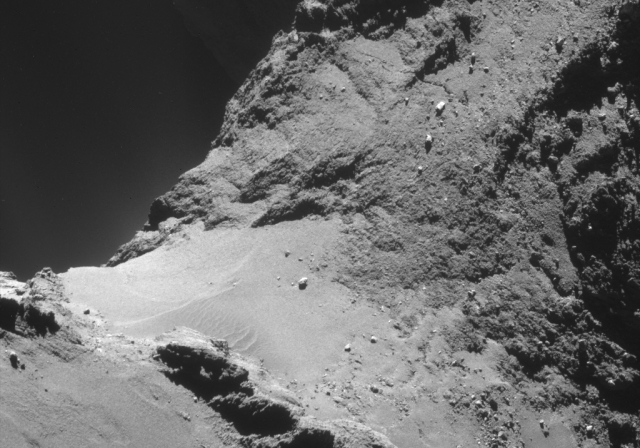Falcon 9 first stage to land on floating platform
The competition heats up: During an event at MIT on Friday Elon Musk revealed that SpaceX will to try to land first stage of the next Falcon 9 launch on a floating platform.
“We actually have a huge platform that’s being constructed in a shipyard in Louisiana right now,” Musk said in the interview, which was webcast live. He described the platform as about 90 meters long by 50 meters wide. “We’re going to try and land on that on the next flight.”
If the stage successfully lands on the platform, Musk said, it could potentially fly again. He put the odds of success at no greater than 50 percent for this particular attempt, but was more optimistic about the company’s chances of landing on the platform on a future mission. “There’s at least a dozen launches that will occur over the next 12 months,” Musk said. “I think it’s quite likely — probably 80 to 90 percent likely — that one of those flights will be able to land and refly.”
Based on everything this company has promised and later actually delivered, I would be willing to bet that they will do exactly as Musk says, and that sometime in the next year they will successfully recover the first stage of their rocket, an achievement that will shake the entire launch industry to its foundations.
The competition heats up: During an event at MIT on Friday Elon Musk revealed that SpaceX will to try to land first stage of the next Falcon 9 launch on a floating platform.
“We actually have a huge platform that’s being constructed in a shipyard in Louisiana right now,” Musk said in the interview, which was webcast live. He described the platform as about 90 meters long by 50 meters wide. “We’re going to try and land on that on the next flight.”
If the stage successfully lands on the platform, Musk said, it could potentially fly again. He put the odds of success at no greater than 50 percent for this particular attempt, but was more optimistic about the company’s chances of landing on the platform on a future mission. “There’s at least a dozen launches that will occur over the next 12 months,” Musk said. “I think it’s quite likely — probably 80 to 90 percent likely — that one of those flights will be able to land and refly.”
Based on everything this company has promised and later actually delivered, I would be willing to bet that they will do exactly as Musk says, and that sometime in the next year they will successfully recover the first stage of their rocket, an achievement that will shake the entire launch industry to its foundations.




